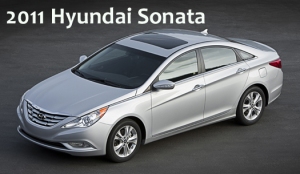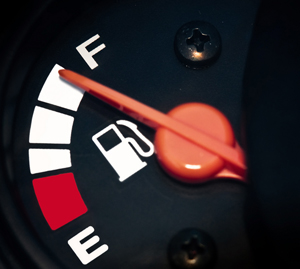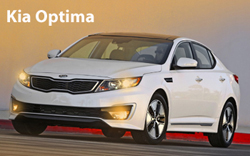When I was a kid my father used to come home with a new car every two years. I’ve since learned that he had a great need for variety in his life and that, rather than uproot his family so as to accept new jobs in new places he channeled that need in the direction of the car lot. I don’t know how he financed all those automotive changes but I do know we drove fancy new wheels every other year.
I, on the other hand, drive the one vehicle that makes me consistently happy, a vehicle I continue to love even four years after paying it off (some might argue that paying it off made me love it even more). I’ll drive it until it doesn’t want to drive anymore.
So, my father was a perfect candidate for leasing while I’m the ideal buyer… right?
At least I used to think so.
We’ve put together a list of the pros and cons of buying and leasing, with a few extras thrown in for context. If, after reading this, you’re surprised to find you’re a buyer when you thought you were a leaser, or vice versa, drop us a line and tell us what changed your mind.
Here goes:
|
LEASING
|
BUYING
|
| PROS |
- Down-payment has more impact on monthly payment
- Sales tax based on monthly payment, not overall price
- Allows you to drive a new vehicle every few years
- You’ll never owe more than the vehicle is worth
- May offer business owners certain tax advantages
- Might offer lower
monthly payments*
|
- Assuming you pay it off, you’ll eventually own the
vehicle
- There are no mileage restrictions
- Insurance limits may be lower
|
| CONS |
- You’ll always have a car payment **
- Restrictions on the number of miles you drive every year (usually between 12-20 cents per mile, depending on the lease program
and the vehicle manufacturer)***
- Insurance costs may be higher
|
- Up-front, out-of-pocket costs may be higher (ie:
sales tax)
- Down-payment has less impact on monthly payment
- The vehicle depreciates faster than you earn equity
- Might require a
higher monthly payment*
|
Okay, now some clarification:
*One of the most common misconceptions about leasing is that the monthly payment will be lower than buying the same vehicle. That’s not necessarily true, so says Butler
Acura Sales Manager Mark Zinn. Mark says the leasing concept was primarily created for business owners in order to allow them to move their fleet from the asset column to the expense column. Because, let’s face it, we all know our car or truck isn’t an asset; It loses value the second we drive it off the lot and it becomes “used”. Leasing allows
business owners, and now the rest of us, to “rent” our transportation, investing as little as possible into a depreciating product. So, say you have your eye on a $30,000
vehicle. Finance it for 60 months or lease it for 36, either way it will be worth the same amount at the 36 month mark. The only way you can guarantee a lower monthly payment through leasing is if you would have financed the vehicle for the same length of time.
**You’ll only always have a car payment if you continue to lease new cars. If however,
you reach the end of your lease but you’ve fallen head over heels for your ride, you may have some options, depending on your lease program. You can drop the keys off at the dealership and walk away (forever referring to that car or truck as “the one that got
away”), or you can finance the remainder of the vehicle’s value and turn the lease into a loan.
***Mileage restrictions. As we mentioned in the Pros and Cons, the penalty for driving more than the allotted number of miles per year can be pretty steep at 12 to 20 cents per mile. But let’s put it in perspective. Mark Zinn says, “There’s no such thing as a person driving too many miles to lease.” Here’s why: When you lease a vehicle you are guaranteed a residual value, or the predetermined value of the car at the end of the lease
period. That value is figured by taking into consideration the amount of wear and tear the vehicle will go through in your care. Your sales consultant will ask you how many miles a year you think you’ll drive before arriving at a residual value. So, say you think you’ll drive the $30,000 car that’s calling your name 10,000 miles a year and your sales consultant guarantees you residual value of $15,000. But then you drive the vehicle 12,000 miles a year. When you turn it back in it’s less valuable than it would have been if you’d stuck to your original estimate. So, in order to guarantee you the $15,000
equity residual value, the dealer has to charge you the difference between what was promised and what the vehicle’s now worth.
On the other hand, if you bring your leased vehicle in at the end of the contract with fewer miles on it, and that leads to an appraisal higher than the residual value, the dealer owes you money! The bottom line is the wear and tear you put on your vehicle will result in lowered value. As an owner, you may make money when you decide to sell it but, you
could also lose money. With a lease, you’ll either make money or break-even but you’ll never lose money.
Which brings me back to my family’s automotive history. Remember my father, the perfect lease customer? Well, he’s surprised us all and stuck with the same car for at least the past 5 years. And as for me… I’m still in love with my little rig and wouldn’t trade it for anything. But, should I ever need a second car, you can bet I’ll consider a lease.
 Summer’s a’comin’! So, it’s time again to treat your vehicle to a little TLC. Last November, we posted a list of everything you might need to tackle winter driving conditions. Now that the studded and snow tires have (hopefully) been removed, here’s how to travel worry free into the warmer months:
Summer’s a’comin’! So, it’s time again to treat your vehicle to a little TLC. Last November, we posted a list of everything you might need to tackle winter driving conditions. Now that the studded and snow tires have (hopefully) been removed, here’s how to travel worry free into the warmer months:
































